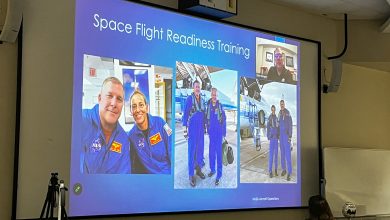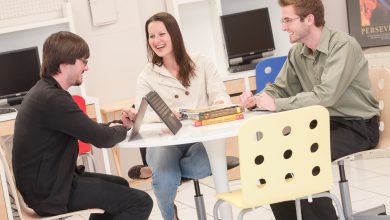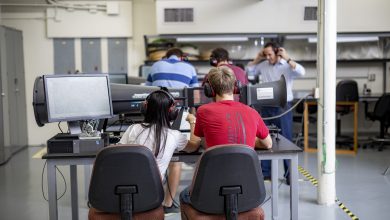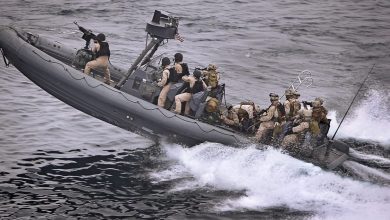Florida Tech Professors Passion for Particles Finds Funding
MELBOURNE, FLA. — It’s a nightmare. A post 9-11 scenario of concealed nuclear material surreptitiously making its way to U.S. ports is enough to scare anyone
into wakefulness. The possibility spurred the Department of Homeland Security to establish the Domestic Nuclear Detection Office (DNDO) in 2005. The
office’s mission is to reinforce the nation’s ability to detect and thwart such attempts.
Among recently funded DNDO projects is one by Florida Tech Associate Professor Marcus Hohlmann. Under a one-year initial grant of $230,000 Hohlmann is
adapting an existing technology developed for high-energy particle physics experiments. With good progress the funding should become $1.3 million over a
projected three years.
The effort involves muon radiography. Muons are naturally produced by cosmic rays, which arrive from deep space and constantly bombard the Earth’s
atmosphere. High-energy elementary particles, they are much heavier versions of electrons and are difficult to block by concrete or lead. Although muons
are deeply penetrating, heavy nuclei that would be present in smuggled nuclear material could deflect them. The heavier the nuclei, the more the muons
scatter.
Hohlmann will apply a novel type of micro-pattern particle detector, a gas electron multiplier (GEM). The GEM was initially developed at CERN, the European
Laboratory for Particle Physics near Geneva, Switzerland.
“Our ultimate plan is to use the GEM micro-pattern detector for particle tracking to measure the deflection of muons and apply it to the overseas shipping
arena,” said Hohlmann. “The detectors could be physically installed at the nation’s ports or integrated into the actual cargo containers. Or, the detectors
might be placed on the ships themselves.”
Here is how the project would work: Following computer modeling, Hohlmann and his team will develop detectors, electronics, and software for a data
acquisition system and online data analysis. They’ll design, build and test the GEM prototype detector in a simulated cargo container.
Associated signal readout electronics will provide information about the scattering angle of the muons as they pass in and out of the material. The wider
the angle is, the bigger the nuclei inside and the greater the likelihood that the material is dangerous nuclear contraband.
“The Department of Homeland Security believes there is a great need to train young people in this kind of protection,” said Hohlmann. “I agree that we must
use our knowledge to check the evil consequences of nuclear technology. That’s what motivates me.”




